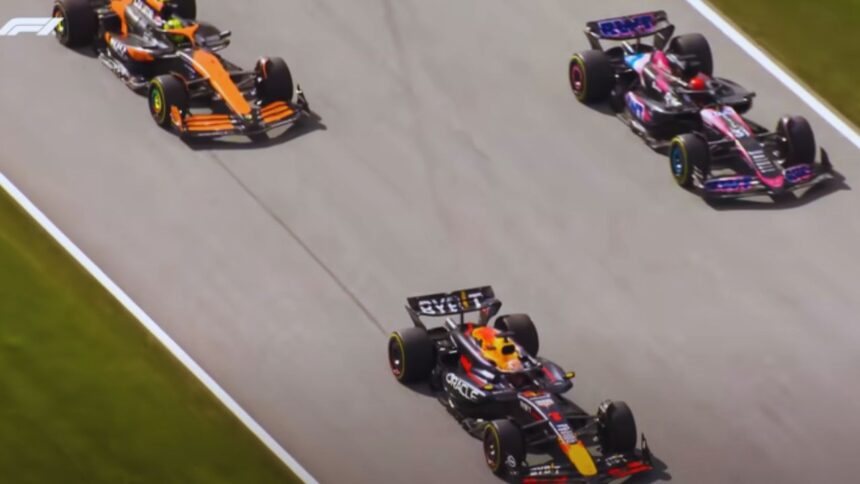Drivers at the Austrian Grand Prix have backed the FIA’s track limitations experiment, a daring move that could revolutionize the Formula 1 sport. This trial is centered on Red Bull Ring Turns 9 and 10, which are well-known for the spike in track limit infractions that occurred there last year.
The plan entailed putting in place gravel strips on either side of smaller kerbs to slow down cars that go past the white lines. The purpose of this configuration is to discourage drivers from going above the track restrictions in an attempt to obtain an unfair advantage.
The impact was felt immediately during qualifying sessions, where the effectiveness of the new measures came under scrutiny. Oscar Piastri’s lap time deletion due to a minor infringement at Turn 6 sparked initial controversy, prompting further debate on the overall efficacy of the changes.
Still, most drivers seem to be in favor of the changes implemented at Turns 9 and 10. “I think it’s definitely one that works very well here this weekend, that’s proven for sure,” Haas’ Nico Hulkenberg said in favor of the solution. His opinion was in line with the drivers’ general agreement that these kinds of initiatives are essential to preserving the sport’s fairness and competitiveness.
F1 drivers back Austria GP track limits experiment https://t.co/60uU6YDG1a #Formula1 pic.twitter.com/HxJg28wxj9
— Gerard Grouve Sport (@Grouve_Sport) June 30, 2024
Track limitations have been a divisive topic in recent years, with several circuits finding it difficult to implement the regulations uniformly at various locations. By taking a proactive approach to standardizing these safeguards, the Austrian Grand Prix may be able to create an example for other racing venues in the future.
“I believe this is a step in the right direction,” commented one driver, who preferred to remain anonymous. “It’s about finding the right balance between allowing drivers to push the limits while ensuring everyone adheres to the same rules.”
The implementation at the Red Bull Ring isn’t without its challenges. The fine line between penalizing legitimate racing actions and preventing track limits abuses remains a delicate balance. However, drivers are optimistic that with continued feedback and refinement, such initiatives could revolutionize how track limits are managed across the F1 calendar.
Critics argue that while the changes at Turns 9 and 10 are a step forward, they may not be universally applicable to all circuits. Each track presents unique challenges, requiring tailored solutions to effectively manage track limits without compromising safety or race integrity.
Despite these reservations, drivers agree that aggressive tactics, such as those employed at the Austrian Grand Prix, are required to guarantee an even playing field for all participants. Track limit issues will surely stay at the top of the sport’s agenda as Formula One continues to change.
In the future, it is anticipated that the FIA and circuit organizers will closely examine the data and feedback obtained during the Austrian GP. If comparable interventions can be repeated in other circuits in the future, this information will be essential.
In conclusion, while the road to perfecting track limit enforcement may be long and winding, the Austrian GP has set a promising precedent. With drivers endorsing these initiatives, Formula 1 may be on the brink of a transformative era in how track limits are approached and regulated across the sport.
Read More: FansGossip






